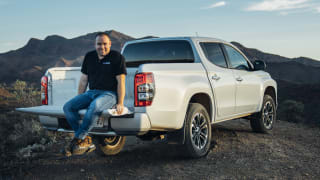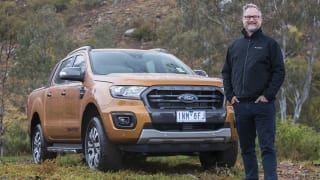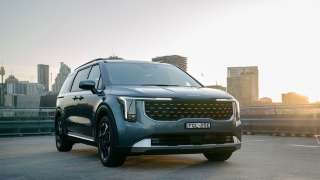Our test vehicle is the MY20 Amarok Core V6, which with TDI500 V6 turbo-diesel engine, six-speed manual transmission and dual-range part-time 4x4 transmission has a list price of $49,590 plus ORCs.
Our example includes the Enduro accessories pack comprises black side body decals, black sports bar and black bonnet protector. With a $1200 retail value, VW is absorbing the extra cost of these accessories by keeping the Core Enduro at the same price as the base Core model.
With its work-focused fabric seat trim and rubber floor covering, the Core is the most affordable (sub-$50K) entry point to Amarok V6 ownership, but that doesn’t mean it’s stripped to the core in terms of desirable features.

Standard equipment includes 17-inch alloy wheels with 245/65 R17 tyres and full-size steel spare plus front fog lights, chrome radiator grille highlights, matt black rear-step bumper, wheel arch flares, leather-covered steering wheel with height/reach adjustment and infotainment controls, leather-covered gearshift knob, aluminium-finish accelerator and brake pedals and heated door mirrors among the highlights.
There’s also a multi-function driver’s info display and a six-speaker infotainment system with 6.3-inch colour touchscreen and multiple connectivity including voice control function, CD player, Apple CarPlay, Android Auto and Bluetooth. By contrast, there’s only one 12-volt accessory plug, which is located in the centre console.


















